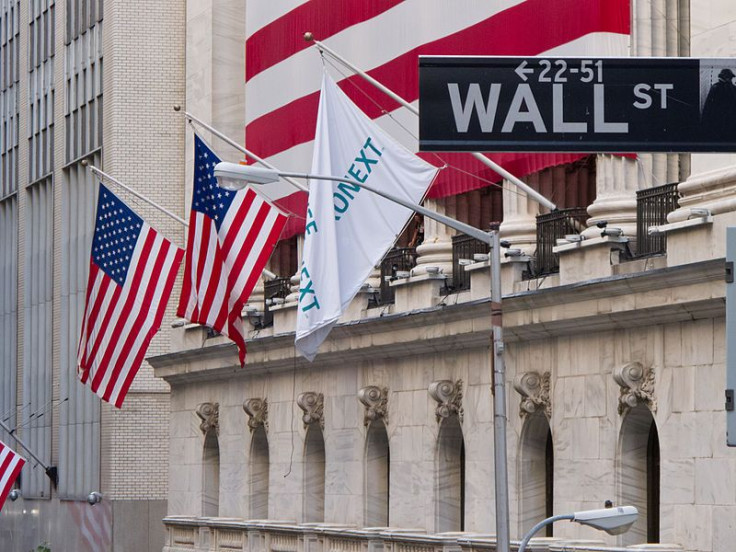Friday's Stock Market Close: US Equities Drop As Huge Job Cuts In March Portend Grimmer Future

KEY POINTS
- Nonfarm payrolls plunged by 701,000 in March, the first such decline in payrolls since September 2010.
- The unemployment rate rose to 4.4%.
- Over the past two weeks, more than 10 million people filed for unemployment claims
U.S. stocks dropped on Friday after the March payrolls data suggested the beginning of a catastrophic period of job losses.
The Dow Jones Industrial Average fell 360.91 points to 21,052.53, while the S&P 500 dropped 38.25 points to 2,488.65 and the Nasdaq Composite Index tumbled 114.23 points to 7,373.08.
For the week, the Dow dropped 2.71%.
Friday’s volume on the New York Stock Exchange totaled 4.98 billion shares with 603 issues advancing, two setting new highs, and 2,390 declining, with 175 setting new lows.
Active movers were led by Carnival Corp. (CCL), Luckin Coffee (LK); and Occidental Petroleum Corp. (OXY).
The Labor Department said on Friday that nonfarm payrolls plunged by 701,000 in March, the first such decline in payrolls since September 2010. The unemployment rate rose to 4.4%. However, these figures do not include the full impact of coronavirus-related shutdown due to the methodology used by the Labor Dept. over the past two weeks, more than 10 million people filed for unemployment claims.
“Today’s nonfarm payrolls data confirms what we’ve already known: the U.S. economy was doing well before COVID-19 ′ s impact was felt, and COVID-19′ s impact has been severe, ” said Lauren Goodwin, multi-asset portfolio strategist at New York Life Investments. “Job losses will continue to surge as the national shutdown strengthens its hold on the U.S. economy.”
Diane Swonk, chief economist at Grant Thornton, tweeted: “[Job] losses broad based and represent the tip of the millions in job losses we have already experienced. Things will get much worse. Government employment one of only sectors to post a gain -- not actually significant in the context of the report. COVID indiscriminate [with] job losses.
“The main message is the labor market conditions started to slip in March, but obviously with the last two initial claims reports we’ve seen, we know April will be a disaster for labor markets,” said Michael Gapen, chief U.S. economist at Barclays. “We still have two more weeks, and we’re probably looking at an unemployment rate of more than 10% in April. The suddenness with which it all slipped off a cliff in two weeks is shocking. We now have stay-at-home orders in states that account for 82% of GDP.”
IHS Markit said its measure of services and manufacturing in the euro zone suggested an annualized economic contraction of about 10%.
Markit’s composite Purchasing Managers Index dropped to 29.7 in March, down from 51.6 in February and well below the 50 line that separates growth from contraction. Almost every euro zone country in the survey had a record-low reading.
New York Gov. Andrew Cuomo said that state now has more than 100,000 cases of coronavirus, with more than 2,900 deaths.
“This still feels like something we’re heading into, not heading out of,” warned Brian Nick, chief investment strategist at Nuveen. “We can see the light behind us, but not ahead of us. The upside scenario is disappearing very quickly and the base case is getting worse.”
“We are not going to have the real recovery in the market until what we think is the peak in the amount of infections and deaths,” said Stephen Dover, head of equities at Franklin Templeton. “We are going to continue to have very wide volatility until we can get over this uncertainty.
Overnight in Asia, markets were mostly lower. China’s Shanghai Composite fell 0.6%, while Hong Kong’s Hang Seng slipped 0.19%, and Japan’s Nikkei-225 edged up 0.01%.
In Europe markets finished lower, as Britain’s FTSE-100 fell 1.18%, France’s CAC-40 dropped 1.57% and Germany’s DAX slipped 0.47%.
Crude oil futures surged 12.28% at $28.43 per barrel, Brent crude rose 0.85% at $34.40. Gold futures gained 0.64%.
The euro slipped 0.41% at $1.0812 while the pound sterling fell 1.06% at $1.2264.
The yield on the 10-year Treasury plunged 6.38% to 0.587% while yield on the 30-year Treasury dropped 4.41% to 1.214%.
© Copyright IBTimes 2024. All rights reserved.



















